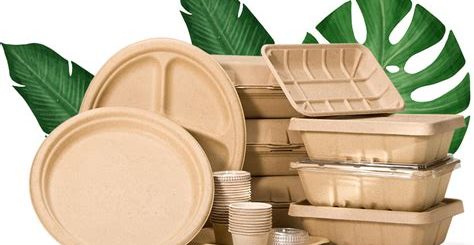How to Safely Consolidate Chinese Cosmetic Packaging & Raw Materials for European & North American Brands (2023 Guide)
Introduction: The Rise of Chinese Suppliers in the Beauty Industry
The global beauty industry is increasingly turning to China for high-quality, cost-effective cosmetic packaging and raw materials. For European and North American brands, especially small and medium-sized enterprises (SMEs), sourcing from Chinese manufacturers offers significant cost savings and access to innovative solutions. However, navigating international logistics, customs regulations, and quality control can be daunting. This guide outlines a safe, compliant, and efficient strategy for consolidating shipments from China to Europe or North America, tailored for beauty brands.
Key Challenges in Importing from China
- Customs Compliance:
- EU and U.S. regulations require strict documentation (e.g., COSHH sheets, ingredient disclosures, and safety data).
- Tariffs and duties vary by product type (e.g., plastic packaging vs. natural extracts).
- Quality Assurance:
- Ensuring Chinese suppliers meet EU’s REACH or U.S. FDA standards for cosmetics.
- Risk of subpar materials or counterfeit packaging.
- Logistics Complexity:
- Coordinating multiple suppliers, shipping methods, and customs brokers.
- High costs for express shipping or air freight.
Step-by-Step Guide to Safe Consolidation
1. Identify Reliable Chinese Suppliers
- Vetted Platforms: Use B2B platforms like Alibaba.com or GlobalSources with buyer protections.
- Certifications: Prioritize suppliers with ISO 22716 (cosmetics GMP) or REACH compliance for EU imports.
- Sample Testing: Order samples to verify material quality, durability, and regulatory alignment.
Pro Tip: Work with suppliers who offer English-language support and clear documentation.
2. Consolidate Shipments with a Freight Forwarder
- Why Consolidate?
- Reduce per-unit shipping costs by grouping orders from multiple suppliers.
- Simplify customs clearance with a single declaration.
- Choose a Specialized Forwarder:
- EU-Focused: Kuehne + Nagel, DHL Supply Chain.
- US/Canada-Focused: Freightos, Flexport, or Yunda Expres.
- Shipping Options:
- Sea Freight (LCL): Cost-effective for bulky items (e.g., glass bottles, jars) at 44–10/kg.
- Air Freight: Faster but pricier (88–15/kg) for urgent needs.
- Rail (China-Europe): Eco-friendly option with 33–7/kg rates (limited routes).
3. Navigate Customs and Regulations
- EU Requirements:
- Register for an EORI number and appoint an importer of record.
- Ensure products comply with the Cosmetics Regulation (EC No. 1223/2009).
- Pay VAT upfront or use a VAT-registered forwarder.
- US Requirements:
- File ISF (10+2) with bonded carriers.
- Verify ingredients against the FDA’s Cosmetic Ingredients Database.
- Harmonized Codes (HS Codes): Use tools like TradeTariffLookup.service.gov (U.S.) or TARIC (EU) to classify goods accurately.
4. Quality Control and Risk Mitigation
- Pre-Shipment Inspections: Hire third-party inspectors (e.g., SGS, Bureau Veritas) to check goods before dispatch.
- Documentation Checklist:
- Commercial invoice with detailed descriptions.
- Certificate of Origin (for duty exemptions under trade agreements).
- Safety data sheets (SDS) for raw materials.
- Insurance: Purchase marine insurance to cover loss or damage during transit.
5. Tax Optimization Strategies
- Duty Rates:
- EU: Most cosmetic packaging (e.g., plastic, glass) has a 4-7% tariff, while raw materials (e.g., pigments) may reach 12%.
- US: Tariffs range from 3% for plastic packaging to 10%+ for certain chemicals.
- Free Trade Agreements:
- EU: Use origin certificates to claim preferential rates under the EU-China Trade Agreement.
- US: Apply for Section 301 exclusions for products hit by tariffs.
Case Study: A Sustainable Beauty Brand’s Success
Brand: EcoGlow Cosmetics (UK)
Challenge: Sourcing biodegradable packaging and natural extracts from China without compromising sustainability.
Solution:
- Partnered with a supplier certified under ISO 14001 and FSC for eco-friendly materials.
- Used a rail-and-sea consolidation service to reduce carbon emissions.
- Worked with a customs broker to reclassify goods under lower-duty codes.
Result: Saved 40% on shipping costs and achieved carbon-neutral logistics.
Top Tips for First-Time Importers
- Start Small: Test a single supplier with a small order before scaling.
- Use Technology: Tools like TradeGecko or CustomsHawk automate documentation.
- Build Relationships: Visit Canton Fair or Hong Kong Trade Development Council (TDC) events to network with suppliers.
- Plan Ahead: Lead times for sea freight can take 45-60 days—factor this into inventory planning.
FAQs About Importing from China
Q: How do I avoid counterfeit products?
A: Work with verified suppliers, request watermarks or serial numbers, and use blockchain platforms like VeChain for traceability.
Q: What are the biggest mistakes to avoid?
A: Undervaluing goods (triggers fines), skipping pre-shipment inspections, and neglecting labeling requirements (e.g., bilingual labels for EU markets).
Q: Can I ship hazardous materials?
A: Yes, but ensure compliance with IATA Dangerous Goods Regulations and hire specialists for handling liquids/flammables.

